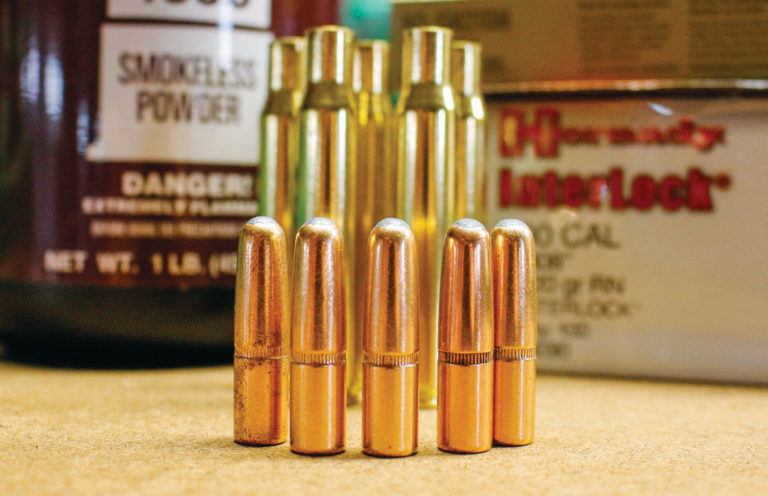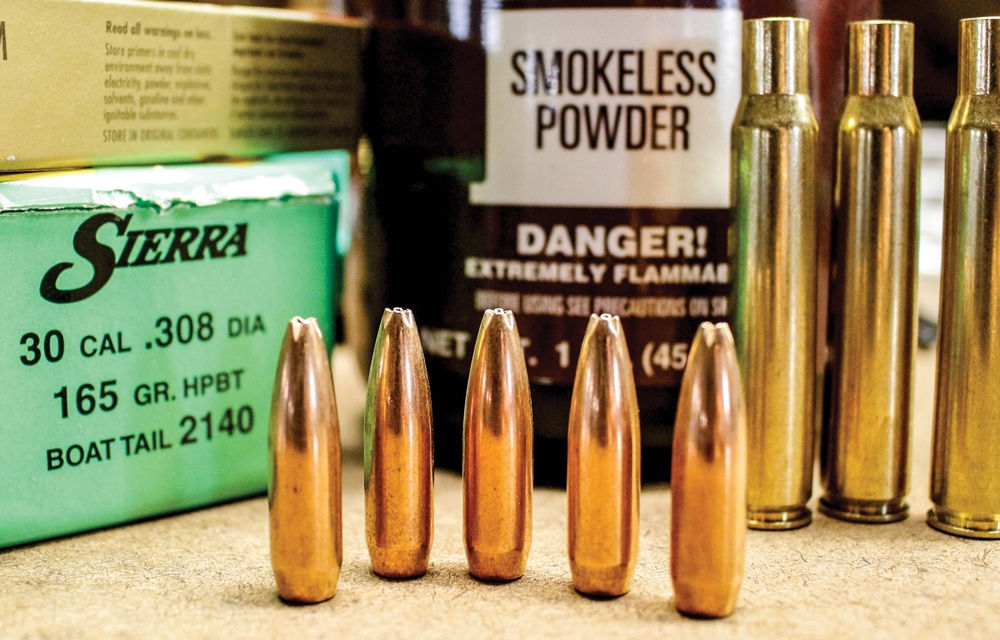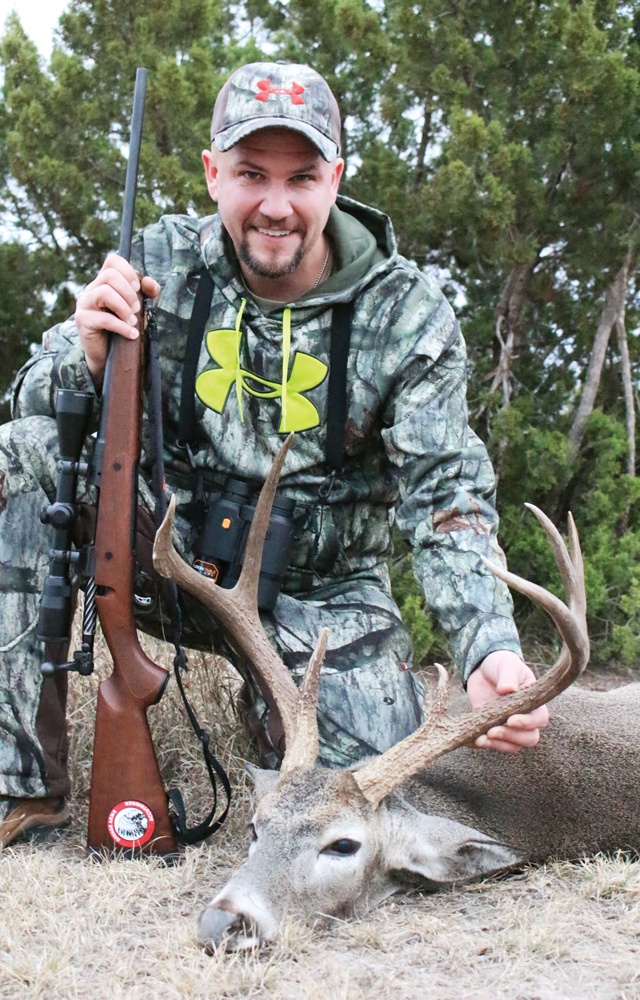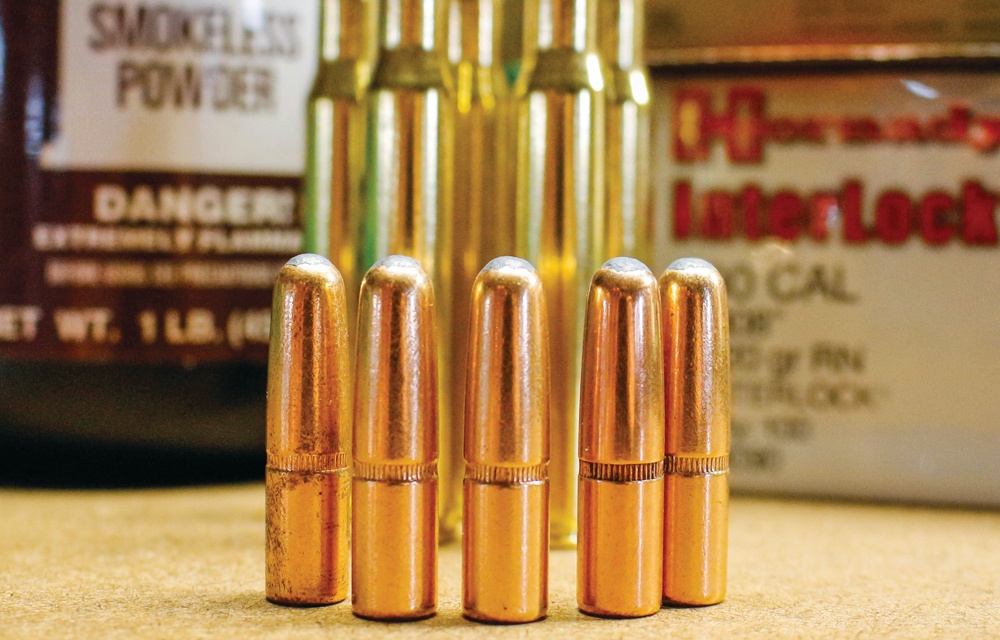
There's no need to overthink deer bullets. While a number of intriguing new designs now exist, classic cup-and-cores still do the job.
Are cup-and-core designs the ultimate deer bullets?
- Cup-and-core bullets have lead cores and copper jackets.
- A bit of lead is exposed at the nose to aid expansion.
- Given a deer’s thin hide, the bullets perform exceedingly well.
- Cup-and-core bullets are economical, so they allow for ample experimentation.
- And they don’t face the issues common to the newer, more radical projectile designs.
I don’t know if there’s anyone who loves heading on a hunt in foreign lands more than Yours Truly; it represents adventure to me on many different levels. However, there is a certain solace that comes with the local deer season, being a part of the traditions that started it all for me, and enjoying the areas where I cut my teeth as a hunter.

In addition, I’m the guy who has and will continue to embrace advancing bullet technology; I find the premium bullets to be intriguing, and I enjoy testing them on large beasts. That said, there are times when a plain old traditional bullet suits the situation perfectly, and deer camp is a shining example of just that.
The cup-and-core bullets that hunters used for nearly every species of game throughout the first-half of the 20th century certainly needed an update, at least with regard to the larger game species. That said, they have been, are, and will continue to be absolutely perfect for hunting deer.
However, as we reloaders tend to learn early on, not all bullets are created equally, no matter what category we’re discussing. Let’s take a look at some good, great and not-so-great traditional deer bullets — and how they relate to your reloading bench.
Deer Bullet Basics
What is a cup-and-core bullet? Well, it’s a bullet with a lead core with an outer jacket of copper that forms a cup around the bottom and sides of the bullet, leaving a bit of lead exposed at the nose to allow the bullet to expand upon impact. That copper jacket is harder than lead — soft enough to be influenced by the rifling, yet hard enough not to leave the amount of residue in the barrel those pure lead bullets will. So, while these bullets have had questionable results against heavy hide and bone, they are, undoubtedly, perfect for deer hunting.
Deer are not hard to kill; they are soft skinned and their bones are not especially large. Hit them wrong, however, and they will show you a different side, taking what seems to be a pounding and still going much farther than anyone would believe. As it is with any game animal, shot placement trumps all, but for deer you want the consummate blend of expansion and penetration, and the cup-and-core bullets will give just that.
Humble Beginnings
For years, the only serious big game rifles I owned were a classic Winchester Model 94, in .30-30 Winchester — with all of its blessings and limitations — and a Ruger Model 77 Mark II in .308 Winchester. Both of them have moderate velocities, and both of them run well on standard cup-and-core bullets. And, both have their own special place in the deer woods, possibly among the top of the heap as far as deer cartridges are concerned. The .30-30 was, in living memory, one of the staples of deer season, though that is changing. But, the .308 Winchester is among the do-all cartridges, offering all sorts of flexibility.
For deer, bullets weighing from 150 to 180 grains have been the historical choices, with the tradeoff being the flatter trajectory of the 150-grain bullets versus the heavier bullet weight and energy figures of the 180-grain slugs.

I preferred to stay in the middle, especially for deer, with 165-grain bullets. My first handloads were built around the Hornady InterLock Spire Point bullets, and they served very well. The InterLock is a bullet I’ve used in many different situations, and while I usually don’t take advantage of the cannelure for crimping, as the .308 Win. offers enough neck tension that I don’t feel the need to crimp my loads, the terminal performance is excellent on deer.
In those early days of reloading — as the distances at which the Northeast deer woods allowed were short — if my loads were of 2 MOA accuracy or less, that was fine. Shots over 60 yards were a rarity, and they got the job done. But, if nothing else, they planted the seed for a reloading nut, and I was eager to load and test many different deer bullets for both accuracy and terminal performance.
Ample Options For Deer Season
I ended up feeding that .308 Winchester what I consider to be one of the best deer bullets on the market: the 165-grain Sierra GameKing hollowpoint. This bullet was part of the equation that resulted in what was my first truly accurate handload, as well as resulting in a considerable amount of meat in the freezer.
It has a hollowpoint crimped to look like the letter X — for reliable expansion — yet has a thick jacket to keep that expansion rate in check, and a boat tail for longer ranges. I’ve loaded this bullet not only in the .308 Win., but also in the .30-06 and .300 Winchester Magnum, and it stood up to all three. No crimping groove, just a plain old bullet built right, and one that continues to serve to this day.
The Nosler Ballistic Tip is another good choice when it comes to deer bullets that has served well in many different situations. It’s certainly accurate, though it has developed a reputation for being overly frangible on game larger than deer. However, on deer and deer-sized animals, if of sufficient weight, the Ballistic Tip is lights out. My little .308 Win. loves the 165-grain BTs, and there’s enough bullet there for good penetration in addition to the expansion and resulting wound channels that deer hunters love. It’s sleek with a good ballistic coefficient (BC), but not so sleek as to require a longer-than-normal seating depth.

The Speer softpoints, as well as the Remington Core-Lokt, have received mixed reviews over the years, but I’ve used both to take deer. They aren’t the strongest of deer bullets, and when I use them I do my best to keep two ideas in mind: I want a bullet in the middle to heavy end of the spectrum, and I want to keep the velocities mild. Quite obviously, they’ve worked for decades, but I have found some of the Speer line to be damned near explosive.
Reloading Considerations
What do these all have in common for the reloader? Well, a couple of things:
First, they are an affordable means of developing your handloads — and handloading skills — allowing for quite a bit of experimentation without breaking the bank. Second, they are usually of simple design and will avoid some of the more complex reloading ideas associated with the more radical developments. They take up considerably less room in the case than the monometals and really high BC bullets do, making life a bit easier for the reloader. The ogives of the spitzers tend to be more rounded, making bullet seating a bit easier as well.
And, one last point: If you hunt in the forests and woodlands where shots tend to be a bit closer, don’t overlook the old round nose designs; I use the Hornady InterLock quite regularly, and the Sierra round noses are equally dependable. They impart their energy wonderfully, and keeping their weight forward, they give all sorts of room in the case, making loading for the .308 Winchester, .250-3000 Savage and other shorter cases a breeze.
Here’s to a great deer season!
Editor's Note: This article originally appeared in the November 2017 issue of Gun Digest the Magazine.

Next Step: Get your FREE Printable Target Pack
Enhance your shooting precision with our 62 MOA Targets, perfect for rifles and handguns. Crafted in collaboration with Storm Tactical for accuracy and versatility.
Subscribe to the Gun Digest email newsletter and get your downloadable target pack sent straight to your inbox. Stay updated with the latest firearms info in the industry.

![Best Concealed Carry Guns In 2025 [Field Tested] Wilson Combat EDC X9S 1](https://gundigest.com/wp-content/uploads/Wilson-Combat-EDC-X9S-1-324x160.jpg)


![Best 9mm Carbine: Affordable PCCs [Tested] Ruger Carbine Shooting](https://gundigest.com/wp-content/uploads/Ruger-Carbine-Shooting-100x70.jpg)
![Best AR-15: Top Options Available Today [Field Tested] Harrington and Richardson PSA XM177E2 feature](https://gundigest.com/wp-content/uploads/Harrington-and-Richardson-PSA-XM177E2-feature-100x70.jpg)
